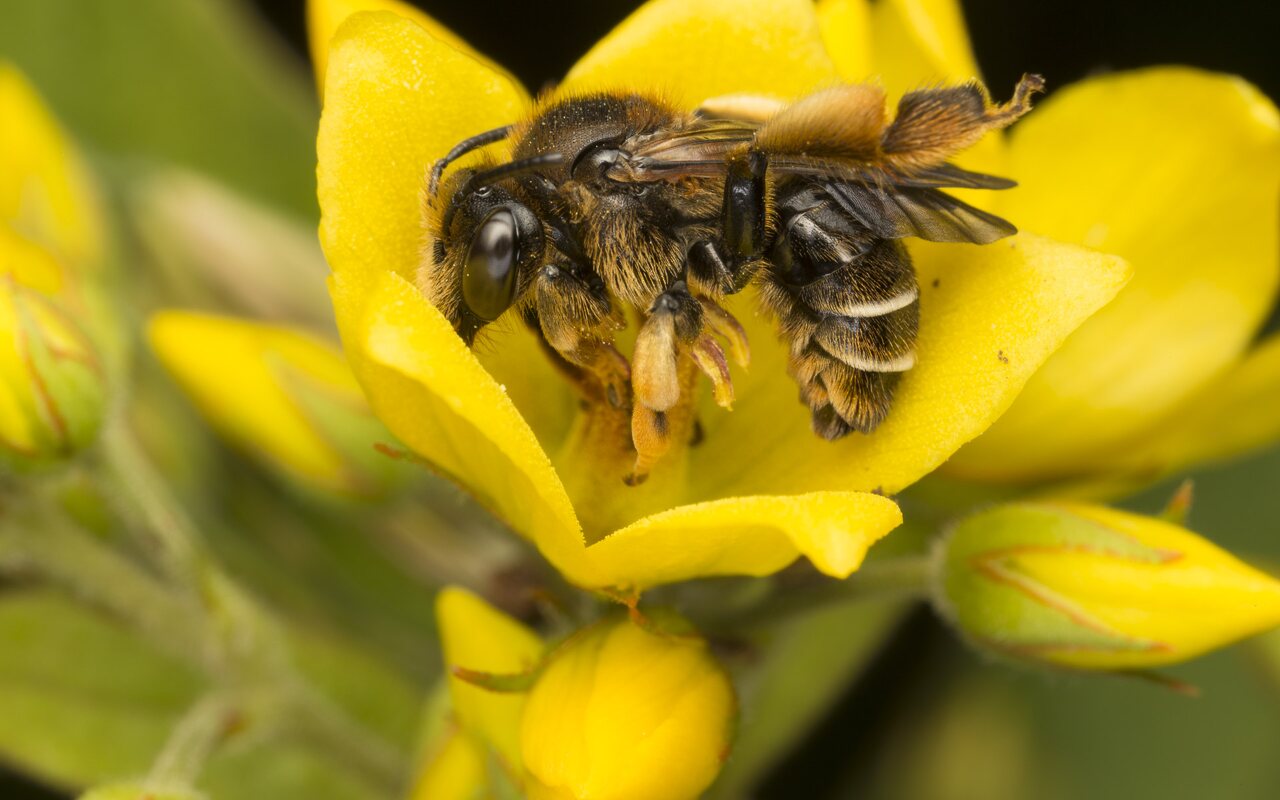
Macropis fulvipes female · urvabitė ♀
on Lysimachia vulgaris (ant paprastosios šilingės)
- Wald-Schenkelbiene, Gelbbeinige Schenkelbiene, Braunbeinige Schenkelbiene
- Keltasäärialpimehiläinen
- Bruine slobkousbij
- skrócinka żółtonoga
https://en.wikipedia.org/wiki/Macropis Macropis species are of moderate size, not exceeding 15 mm. They have a livery predominantly black; males are characterized by conspicuous yellow markings on the head, but the females show morphological adaptations related to their foraging habits of flower oils, posterior tibiae with very developed, covered with a dense velvety hairs.
They are solitary bees that dig their nests in the ground. Most species are oligolectic and their larvae are being provisioned pollen and floral oils of Lysimachia spp. Adults feed on nectar from various plants. They make a single generation per year. The males emerge from the ground in spring, just before the females, and await the females in the vicinity of the flowers of the host plant. After mating, the females dig a nest in the ground, ending with one or two rooms in which is collected the pollen, which is placed on the egg. The larvae, feeding on the pollen, develop rapidly, and within 10 days turn into pupae, spending the winter in this stage.
It seems all photos Macropis fulvipes. Male base of mandible yellow, labrum yellow. Female Tb2, Tb3 and Bt3 inner face with yellow pilosity. T4 lesser punctured. Postscutellum pilosity usually whitish.
Macropis europaea also occurs in Lithuania and is similar to Macropis fulvipes.
‥
0 comments
Add a comment